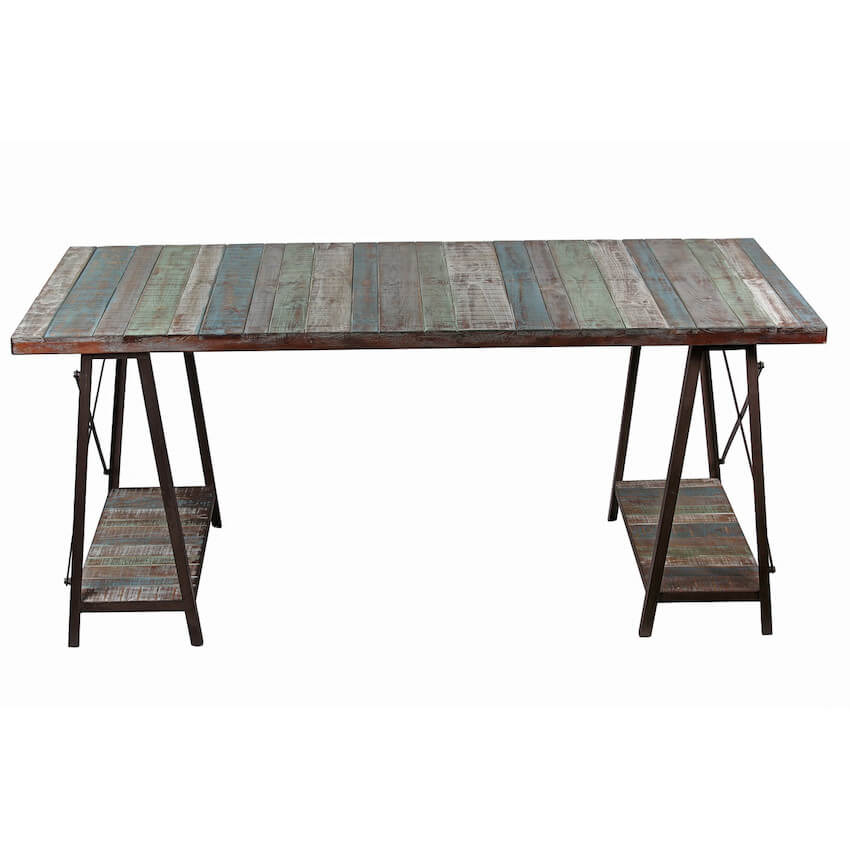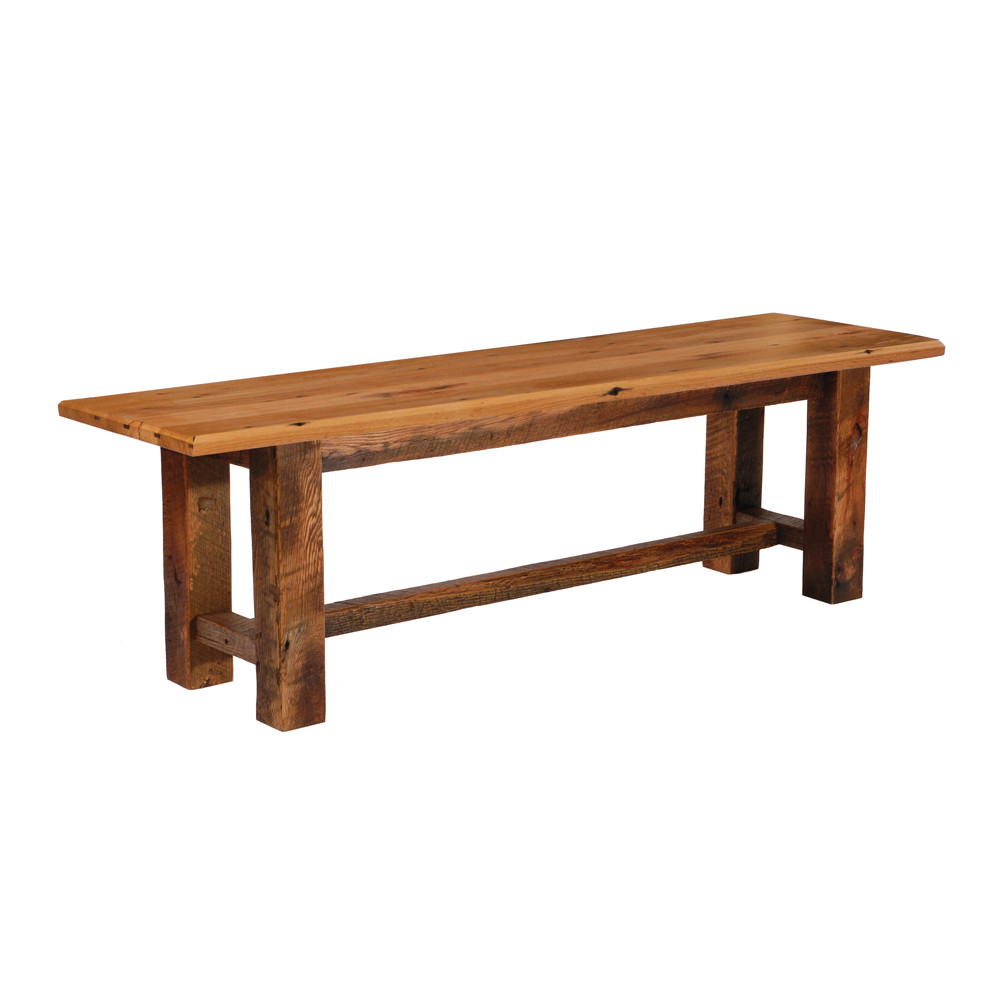Reclaiming The Forsaken: Turning Old Barn Wood into Beautiful Spaces

I’ve travelled around our great nation a fair bit, and one thing I’ve always been drawn to is old barns and farmhouses. I’ve seen them in the fields of the Midwest and on the vast open prairies of Oklahoma and in Arizona deserts. In New England, where I live, these old structures are less common but do exist if you know where to look.
These old buildings usually aren’t pretty, having suffered years of neglect. They may have a pronounced lean, a roof that’s fallen in, or a resident population of rodents or snakes. But the history they represent is intoxicating. Lives were lived (and sometimes lost) around these barns. People used these barns to raise livestock, store grain and tools, or even in some cases to hide valuables. Often they’re flanked by rusted farming equipment or abandoned old cars.
During a recent conversation with a close friend and Oklahoma resident, we got to talking about these old beauties. I asked about on in particular that I had been too and felt a sort of kinship with. The reply I got both saddened me and ignited my curiosity. The old barn had been torn down, he said, and the wood and nails and other items inside had gone to the “reclamation industry.” He went on to tell me that the old barn had sold for a hefty sum because of it’s condition. I asked him if he knew how much the wood had sold for, and he said he didn’t know. As many of my readers know I’m all about upcycling and repurposing, so I just had to find out more.
After some research, I discovered that barn reclamation is in fact a huge business. Or, rather, that the actual upcycling of the wood is a huge business. A search of my favorite decor website, Wayfair, came up with no less than three hundred and seventy results for reclaimed wood, many of them carrying a hefty price tag. A second search for reclaimed wood prices brought me to a lumber wholesaler who was selling reclaimed wood for a pretty penny per run foot. Evidently you can buy lumber from an old barn for literally any part of your home including flooring. This wood commands such a price for good reason- there’s something about wood aged by time that no chemical aging process could ever reproduce. Reclaimed barn wood is also finite material, meaning we’ll eventually run out of it.
The process of gathering the reclaimed materials is a bit of a story itself. It starts when a farmer decides to get rid of an old barn or farmhouse. That decision might be based on tax benefits, the need for liquid assets, or because they don’t want an old barn in that spot any more. Whatever the reason, they have a couple of options: either let the local fire department burn it down and put it out as practice or make some money off it.
Most farmers would sensibly choose to make money. If they wanted to take it down themselves, there are options for that. If they’d rather have an outside company do it, there are options for that too. Reclamation companies will come out to the property and give an estimate on the lumber value and the homeowner chooses the best offer.
After the building is collapsed, the wood is sorted and graded. It’s then loaded onto trucks and sent to lumber mills. Some of these mill operations are artisanal (which is cool enough for it’s own article) and will hand plane and mill the lumber.
After it’s milled and planed the lumber is sold on the open market. Everyone from national retailers to independent carpenters to DIY weekend warriors can buy it via the internet or by ordering it from a retailer.
From there the somewhat boring story of how old wood becomes lumber becomes the story of what people do with it. If you’re familiar with the rustic look, you’ve likely seen it as wall paneling. It’s a theme used by many restaurants favoring the farm to table method. If you’ve seen a new-built home with “antique” exposed beams, it’s likely from an old barn or farmhouse. It’s also seen in every furniture configuration from table to entire home structure.
Personally, I love the look old wood provides. It’s something that I can best describe as a warm nostalgic curiosity. I can’t imagine what these old barns have seen, what lives and experiences have occurred in the wood when it was still a wall. Feelings aside, it does provide a very attractive rustic element to a room. It can also be used to literally build a room which creates a “built in” theme.
If the antiquated rustic vibe of reclaimed wood is something you like, I encourage you to get some and build something from it. If you don’t want to build, buy something made from it. Having that old wood in your house may inspire the same curiosity as it does in me, or may not. Either way you’ll still have an awesome piece of furniture and history in your home.
I’ve included some images below that show both DIY’s and stuff you can buy outright. These come from “wild wood”, or unfinished tree limbs, and “tame wood”, or planed and cut wood that used to be barns or boxes.
Either wood is an awesome choice, and they’re both equally easy to source on your own.
Quick Guide on Reclaimed Wood Home Decor

This piece has a cool “reclaimed rustic industrial vibe”, which is something you don’t see every day. The warmth of the reclaimed wood plus the coolness of the iron strapping present a visually challenging piece that’s as functional as it is pretty. It would look especially nice with a vase of bright flowers perched on top.

This reclaimed wood candle holder is sure to “light up” your day. It’s a great piece to add some rustic charm to your home, and can just as well be used outside. It would be exceptionally nice if the candles were scented with pine or vanilla, both earthy and rustic scents.

This desk made of salvaged, unfinished tree limbs gives the raw appeal of a rustic cabin with the elegance of a vintage writing desk. The addition of the warmer toned barn wood wood as the top makes this both “wild” and “tame”, which is something most adults can relate to. It would be great in a treehouse-themed kid’s room as well as any office.

There’s nothing more classically New England like a rustic country bench. This reclaimed wooden classic uses all “tame wood”, reclaimed from various sources. It would look amazing next to an upcycled table, especially one with contrasting wood tones.
DIY - Built In Herb Table


This whimsical tray is just downright cool. The contrasting colors on top are great eye candy, and the metal legs add a cool contrast to the wood construction. Plus, the side mounted carry handle make this a breeze to move wherever the party is.

This piece is the epitome of “rustic turned upscale”. What at first glance look like an old log is actually many pieces of reclaimed wood fitted together to form an awesome end table. The splashes of color from incomplete paint stripping add an eye catching appeal that would be lacking in plain wood.

The mix of reclaimed and industrial is really pronounced in this brilliant dining table. By not fully stripping the wood, the creators have added a simple and muted color scheme that really stands out against the dull metal. I especially like the footrests/storage shelves on the ends.
Getting a home decor piece made out of reclaimed wood is also getting a piece of history, something unique that will add that special touch in your home. Get creative and decorate writing a new chapter in your own house and life.